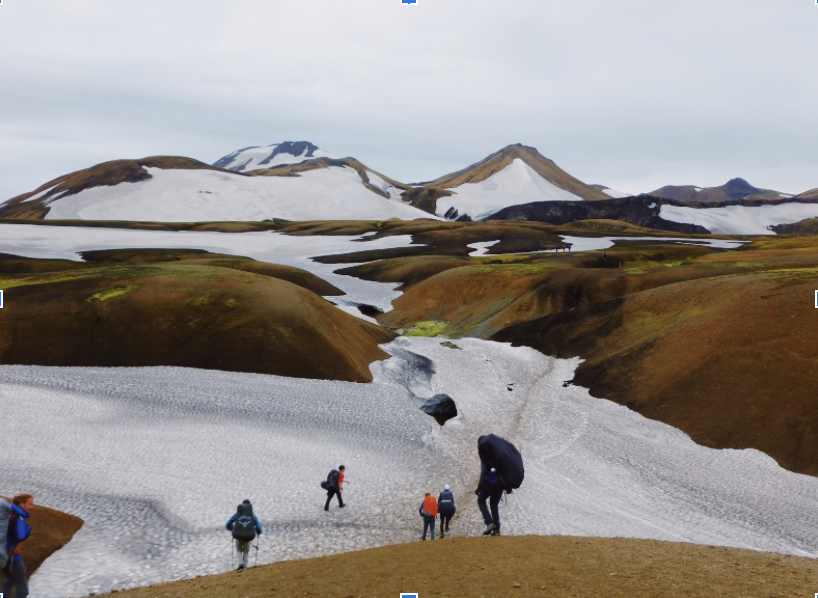
Oct 18, 2019 | Summer Experiences, Uncategorized
Maile Winterbottom (V)
In the midst of some last-minute scrambling to put my summer plans together last April, I quickly scrolled through possible programs and trips I could attend. I came across a two week trip to Iceland held by Overland Summers, a program that takes kids on trips led by college students. It was a backpacking trip, something I was interested in undertaking, and I was up for the challenge. So I clicked “register” and embarked on the journey.
When the day came for me to leave, I was a nervous wreck. I wondered what I got myself into. I thought my two years as an avid Pingry Outing Club participant would prepare me for this, but as the trip grew closer, the thought of strapping my belongings to my back for two weeks in a foreign country felt like something I could never do. Nevertheless, I hopped on the plane to Reykjavik (Iceland’s capital) with my half broken-in hiking boots and didn’t look back.
As soon as I met my group of nine other high school students and two college students (who led the trip), my anxiety that had built up over the weeks prior seemed to dissipate. We settled down at a campsite in Reykjavik on our first night and prepared for the next week, which we would spend backpacking. We would through-hike the Laugavegur trek, a fifty-mile trail popular among tourists in Iceland. I had never done anything like it before.
Although the nerves were sinking in, the girls that I had met just a day ago were already turning out to be my close friends. We talked about our lives back home, our concerns for the trip, how much we missed home, and so much more. There were four girls including me on the trip, and every night we would go into a tent and talk for at least an hour about everything that happened that day, and any other things that were on our mind.
When we arrived at the start of the Laugavegur trek, my anxiety for backpacking had returned, especially after our leaders told us that the first day would be the hardest day of the trip, with ten miles of ground to cover and many difficult uphills. My pack was heavy with food for the group, my clothes for the next week, my tent, and my sleeping bag (weighing forty pounds altogether!). As it turned out, the forty pounds on my back didn’t hold me back from having a great first day on the trail. The ten miles, although difficult, left me feeling accomplished, and the views added to my sense of achievement. When we got to the second campsite, we had pad thai for dinner and played cards, as we continued to bond with our group.
The rest of the trip proved to be one of the most breathtaking and formative experiences I’ve ever had. I met so many different people from different backgrounds and hearing their stories brought me to tears on several occasions. The trail was tough, but it brought us together as a group. Sometimes, completing even the smallest obstacles, like crossing a river or making it to the top of a steep hill, were so gratifying for me. At the end of every day, when I would take off my pack and look back on the miles I just hiked, I thought of the songs I sang, the stories I told and heard, and even the lunch I had, all the while thinking of how grateful I was to be in such a beautiful place.
My trip to Iceland left me feeling humbled by the outdoors and even more appreciative of our environment. In addition, I made some great bonds with the people on my trip who I’m still in contact with. The raw beauty of everything I saw along the way was incomparable to anything I’ve ever seen and taught me more than I have ever learned in the classroom, with concrete walls and fluorescent lighting. It made me realize the importance of embracing nature and taking that leap into the unknown.
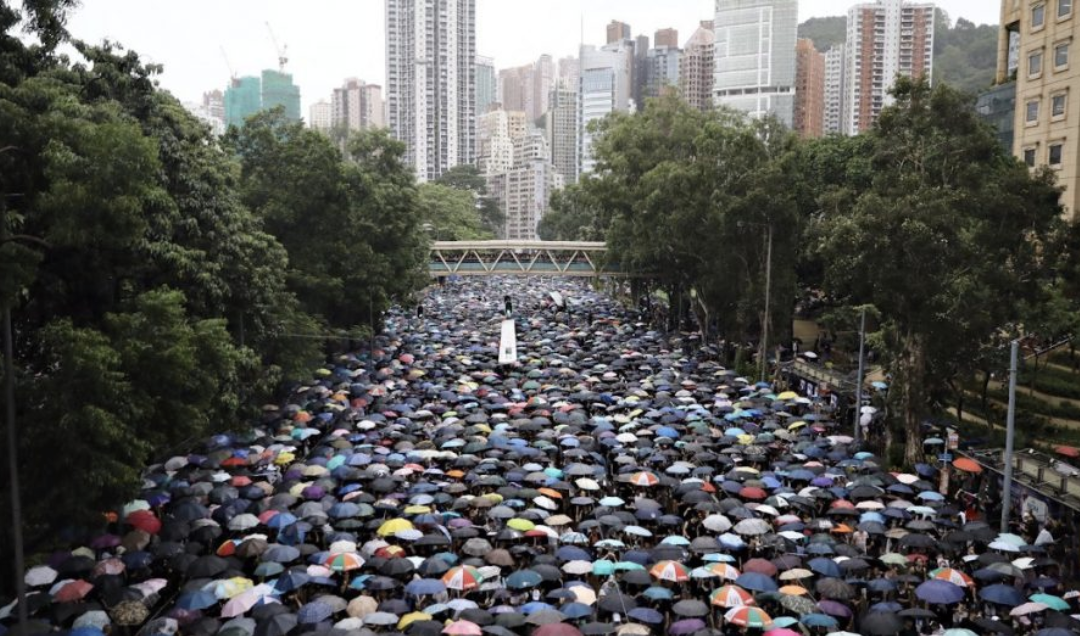
Oct 18, 2019 | Andrew Wong, Summer Experiences, Uncategorized
Andrew Wong (IV)
As my freshman year approached its finale of final exams, I looked forward to a summer of rest and relaxation.
Half a world away in Hong Kong, students were also busy preparing for their exams and their summer. Unlike me, though, they were ready to forsake their fun summer activities and travel plans this year for something they all knew was more important than a trip abroad. On June 9, 2019, a few days after the school year ended at Pingry, hundreds of thousands of students took to the streets of Hong Kong, on a hot, humid afternoon.
Why?
Hong Kong, formerly a British colony, was handed back to China in 1997. As part of the handover, Hong Kong was allowed to have “a high degree of autonomy,” with the ability to “enjoy executive, legislative, and independent judicial power” until 2047, when it would become fully integrated into China.
However, since the handover, this autonomy has steadily eroded. As seen in the last five years, with the barring of six pro-democracy lawmakers from local elections, the kidnapping of local booksellers by the Chinese government, and the arrests of prominent student activists, it has become all too clear that mainland China had been encroaching on Hong Kong’s sovereignty.
In March 2019, Carrie Lam, Hong Kong’s Chief Executive, proposed a bill that would allow fugitives in Hong Kong to be extradited back to mainland China to stand trial in the Chinese judicial system, an opaque legal system with a conviction rate of 99.99%. Many Hong Kongers were outraged by this extradition bill. They could no longer afford to sit and watch their government appease Beijing’s hunger for power.
In early June, a summer of revolution began. One million Hong Kongers swarmed the streets, followed by two million the next week, all demanding that the extradition bill be withdrawn. Despite this, Carrie Lam refused to withdraw the bill.
After a long July of violence, which saw protestors storm the Legislative Council, innocent students viciously attacked by triads in a suburban train station, and a young nurse providing first aid to protestors have her eye shot out by the police, I arrived in Hong Kong. Arriving at the airport, I saw young student protestors, not much older than myself, handing out flyers detailing the various instances of police brutality and the corruption of the Hong Kong government. Later that night, I watched on the news as riot police stormed into the airport while elsewhere in the city, tear gas and rubber bullets were fired into crowds of young protestors.
I was shocked. Why must these students spend their valuable summer risking their lives, while we get to spend our summer lounging on the beach or at home in peace? What is it that prompts an entire generation to rise up in open revolution?
The day school started, on September 4th, I heard the news that everyone in Hong Kong had longed to hear for the last three months––the extradition bill would finally be withdrawn.
It was too little, too late. Since the start of the protests, 2,000 people have been injured, 1,500 people from ages 12 to 75 have been arrested, and there are rumors that some protestors have died as a result of police brutality.
Returning to Pingry, I found peace on campus. I saw students going about their day without the burden of anxiety that comes from tyranny and oppression. In comparing the settings of my summer and my normal life, I realize just how valuable freedom is.
I am proud of the fact that I stood with Hong Kong in the fight for liberty this summer. In August, I was part of the “Peaceful, Rational, and Nonviolent” march, organized by the Civil Human Rights Front in response to weeks of constant police brutality against civilians. I saw the full unity of Hong Kong on display that day, where 1.7 million people of all ages, from little babies in strollers to the elderly, came out despite torrential rain. With chants of “Fight for freedom! Stand with Hong Kong!” and “Hong Kongers! Keep going!” our march pushed forward while a heavy monsoon poured. The scenes that played out that day deeply moved me. It was a powerful display of resistance and perseverance from ordinary Hong Kongers against the abusive power of mainland China.
For many Hong Kongers, what they hope can be achieved as a result of months of struggle can be perfectly summed up in the lyrics of “Glory to Hong Kong,” which has become the anthem of the Hong Kong protests. The song grants hope: “We pledge, no more tears on our land. In wrath, doubts dispelled, we make our stand. Arise! All ye who would not be slaves again: For Hong Kong, may Freedom reign!”
There is still a long road ahead and more months of struggle for the protesters. However, I, along with many other Hong Kongers, hope that in the end, the struggle for freedom will triumph.
光復香港!
時代革命!
香港人加油!
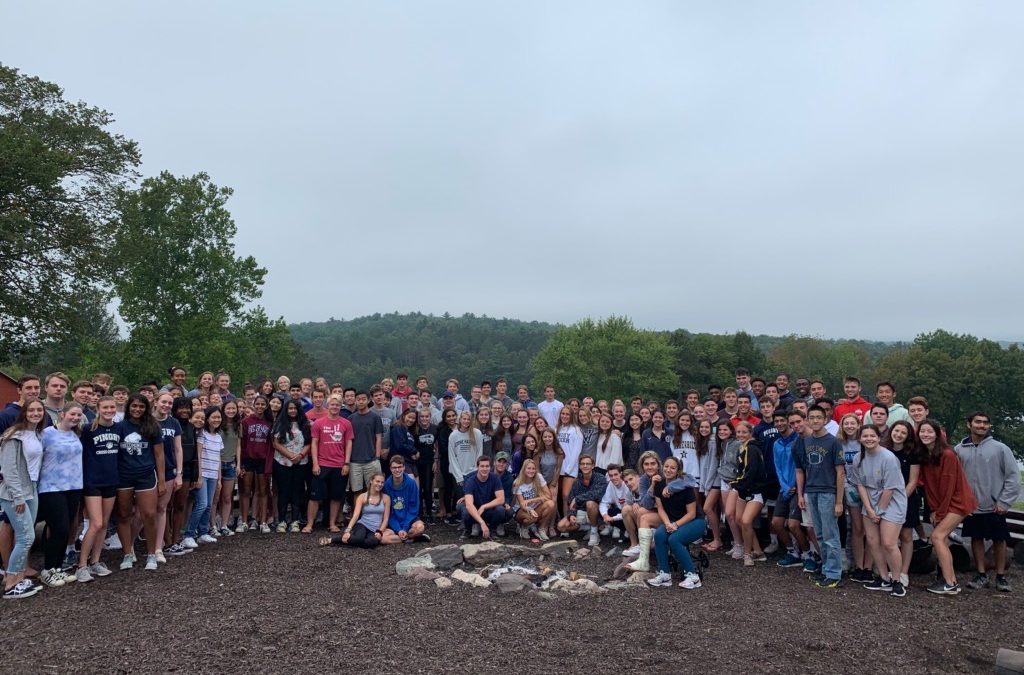
Oct 18, 2019 | School Trips
Martha Lewand (VI)
A week before school began, on September 3rd and 4th, Form VI students traveled to the Pocono Valley Resort in Reeders, Pennsylvania, for their senior retreat.
The seniors spent the trip participating in several activities, including a Western-themed dance, and working on their college applications. The goal of the trip was for the seniors to enjoy themselves while making progress on their applications.
Once the seniors arrived to the campsite via bus, they went to their assigned cabins to unpack. Shortly after, the activities commenced. Students went to relax by one of the two pools or to play sports, ranging from basketball to mini-golf. Students also had the choice to participate in watersports on the lake, climb a rock climbing wall, partake in a ropes course, ride a zipline, and more.
“I went on the ropes course, rode the zipline, and competed with my friends in the ‘human hamster balls’,” said Jessica Hutt (VI). “I really enjoyed these activities, and had a great time experiencing the outdoors with my classmates before heading into our final year together.”
After lunch and activities, the seniors began to prepare for the dance. The theme for the dance was “western.” Students dressed up as cowboys and cowgirls, with a majority of the costumes including flannels, cowboy boots and hats, and bandanas.
“The dance was a fun way to jumpstart senior year,” Nicole Gilbert (VI) said. “It was a great opportunity to reconnect with my friends and strengthen relationships with other people. Dressing up also added to the fun.”
After the dance, seniors enjoyed pizza and a campfire with s’mores. They also had time to socialize with friends in their cabins before the night ended.
“I felt that being able to spend the night with my friends was great, in that it helped me forget about all the college apps and let me focus on just hanging out and talking to my friends,” Thomas Wolf (VI) said. “I appreciated that, even though I didn’t request some of the people in my cabin, they were great company and I enjoyed the night.”
The next morning, the academic work began. After breakfast, the senior class was divided into two groups to partake in “breakout sessions” or workshops. Ms. Finegan and Ms. Reynolds each ran one of the two workshops. They used a descriptive writing exercise to help students with their personal statement essay. In the second workshop, Mr. Lear, Mr. Garrow and Ms. Cooperman split the group into smaller sections to converse about the application process and colleges that are typically undervalued by Pingry students.
Josh Thau (VI) found the workshops helpful, as the sessions increased his confidence in the college process. He said, “Before I went in, I was nervous about everything because I didn’t really know what I was doing,” he said. “But after I talked to both my college counselor and others about my issues pertaining to the process, I felt a lot more comfortable.”
After working on their applications, seniors had lunch, packed their bags, and made their way back to Pingry on buses.
Hannah Guglin (VI) thought the trip was an overall success. “I honestly felt like it was a really good way to start the year, spend some time and have some fun with people that I care about in our last year together,” she said.
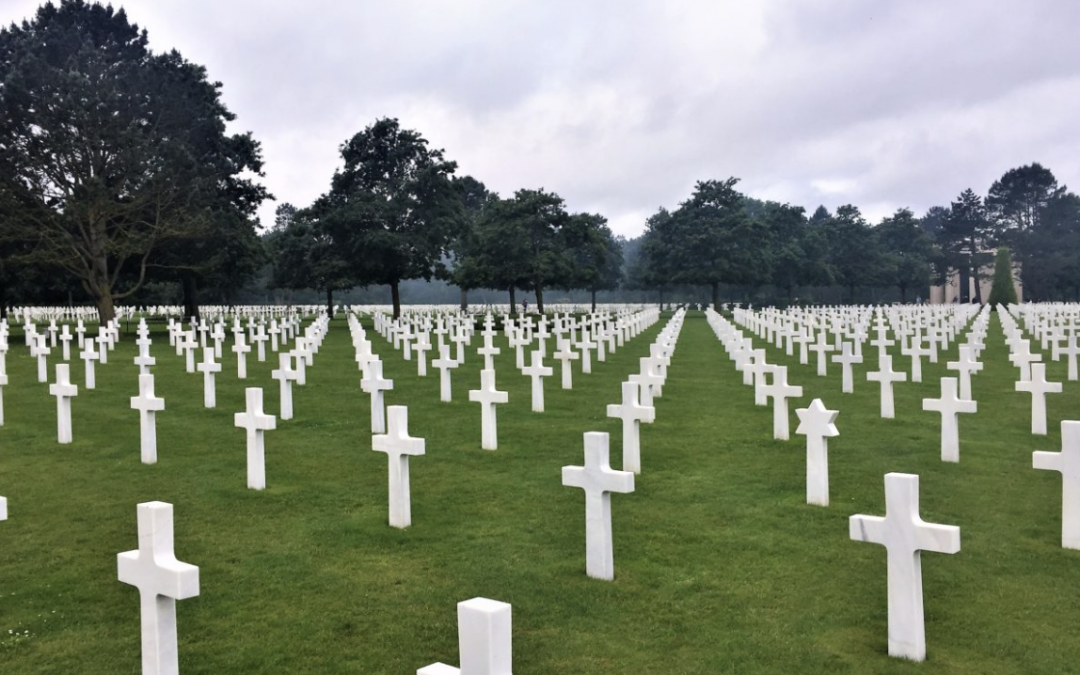
Oct 18, 2019 | Summer Experiences
Ava Kotsen (V)
June 6, 2019 was a lot of things. For many students and faculty at Pingry, it marked the final day of the school year, and the beginning of summer. It also marked the 75th anniversary of the Allied Powers’ Normandy invasion and the battle that ensued––an event more commonly referred to as “D-Day.”
A memorial took place in Normandy, and leaders such as Queen Elizabeth of United Kingdom, French President Emmanuel Macron, Canadian President Justin Trudeau, President Donald Trump, and the Chancellor of Germany, Angela Merkel, attended. These world leaders came together to remember the day that 156,000 Allied troops, 73,000 of whom were American, stormed Omaha, Utah, Gold, Sword, and Juno beaches along the coast of northern France to begin the major Allied invasion of German-occupied country, ultimately leading to the end of the war.
Many historians argue that this was the single most influential battle that ended World War II and Nazi control in Europe. Of course, this victory came at a hefty price––thousands of brave men were mercilessly slaughtered in an attempt to restore freedom to the shores. The waters of the Omaha were tainted red with their blood. The beach sands contained their torn limbs. The seabeds hold the wrecks of many amphibious tanks that never made it to land and the bodies of soldiers who drowned due to the weight of their gear.
During the summer, I had the opportunity to visit Omaha and Utah beaches as well as the United States Cemetery. When I visited Normandy in August, over seventy five years after D-Day, I was looking back on the shores where this very scene had taken place. No signs remained of the brutal battles that had occurred there. Normandy is now known as the most popular vacation beach in northern Europe, a title that it regained when the war ended. Upon my arrival, I was almost horrified to find children laughing and playing in the sand, splashing in the water. Dogs dashed across in long strides, barking contently. Folks socialized and enjoyed themselves. How could all of these people do this knowing what had happened there? Where has it all gone? Massive craters lay in the ground where bombs had exploded, and here and there were a few German bunkers that were still in working order.
I went to the cemetery that held the US soldiers who died overseas in the invasion of Europe during WWII. There was a walkway with a little platform overlooking Omaha beach. People were moving around, talking, laughing, smiling, and snapping photos. They were so light and carefree. I walked to the platform, and looked down through the green and grass-filled hill that led to the water. I went into a state of calm and silence, away from the rest of the world. I just stood there and stared at the ocean. I could hear the waves rolling on the beach.
Somehow, I could sense the spirits of the thousands of the heroic men who had died here. I could feel the presence of each one buried here. I could hear their silent weeping, their endless pain and the suffering that they had endured, the gruesome memories that they carried with them. Each one of them are my brothers, fellow Americans, and I carried their grief with them. I began to cry and weep with them. That day, I was able to see something powerful––the eternal spirit of America’s “greatest generation.” The souls of the warriors who will never forget the events of June 6, 1944, and WWII.
After visiting the cemetery, we returned to the edge, the final stretch, of Omaha beach. There was a sculpture called “Les Braves” (The Brave) built into the sand, facing the ocean. It was midday, not yet low tide, and still the strip of sandy beach extended a good distance outward. I slowly walked through the sand, to the approaching waves. I touched my hand to the cold water. I carefully took an empty water bottle and filled it. Within assorted shampoo bottles, I smuggled this water back home to me upon my return. To me, this water symbolizes the selfless sacrifice that thousands of courageous and bold young soldiers made for American freedom.
Even today, 75 years after the event, I honor the men who lost their lives in the historic D-Day invasion.
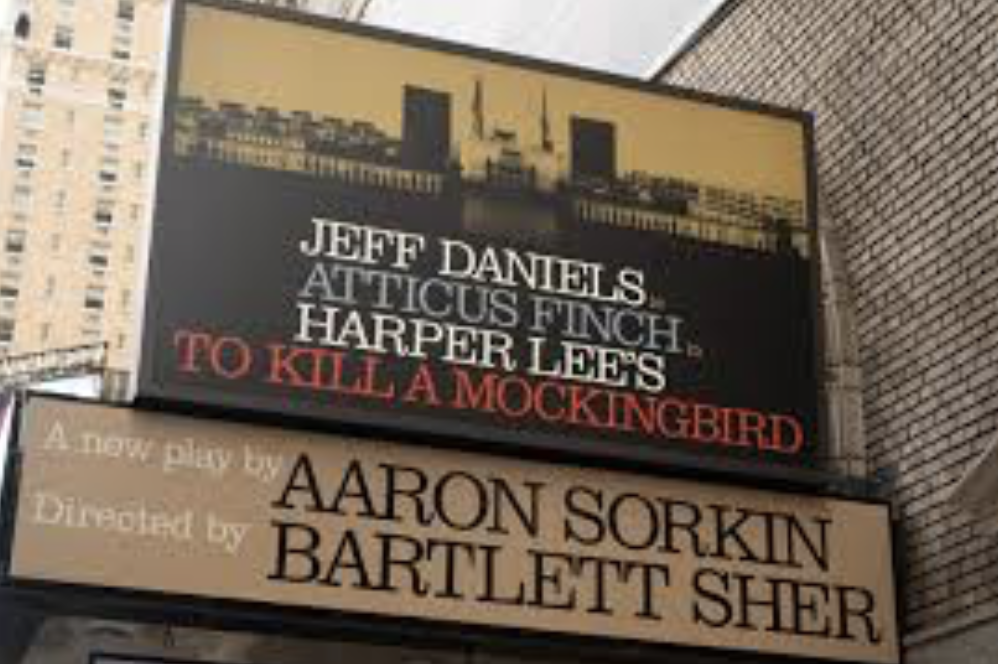
Oct 18, 2019 | School Trips
Katherine Xie (IV)
On Wednesday, September 4, the class of 2022 explored the exhibits of New York City’s Museum of Natural History and went to see the award-winning “To Kill a Mockingbird” on Broadway.
The day began in the school cafeteria where students caught up with friends after a fleeting three months of summer break. The sophomores then crowded onto three buses to make the trip to the city. After an hour-and-a-half bus ride, everyone divided into their advisories and entered the Museum of Natural History.
Upon entering the museum, advisory groups went their separate ways to tour the various exhibits and displays. Since there was no specific activity planned for the museum, each advisory had the liberty to choose the exhibits they wanted to see. The Museum of Natural History had everything from displays of prehistoric animals to diagrams of the early universe to exhibits on early civilizations. Although students only spent a little over an hour at the museum, Anika Govil (IV) says, “Visiting the museum was a really fun experience. I got to spend time with my advisory and learn about animals that I didn’t even know existed.” Students were able to learn about all things history as well as enjoy time with their advisories.
After a quick lunch outside the museum, the buses started up once more and took the sophomores to see “To Kill a Mockingbird.” Students were given tickets as they entered the packed theater and sat with their advisories as they awaited the start.
“To Kill a Mockingbird,” based on the eponymous 1960 novel by Harper Lee, deals with racial issues prevalent in Alabama during the 1930s. The story’s main focus is the trial of Tom Robinson, a black man who is falsely accused of raping Mayella Ewell, a white woman.
While the book begins by depicting the idyllic childhood of characters Jem, Scout, and Dill, the play, narrated by the children, immediately jumps into the trial of Tom Robinson. Atticus Finch (played by Jeff Daniels), Tom Robinson’s lawyer, must stand up to the racial prejudices of that time to do what is right. Through the trial, Scout learns about what it means to become an adult—she observes her father doing the right thing by defending Tom Robinson, despite the sacrifice he makes to do so.
The students enjoyed the play, which provided a different and new portrayal of this well-known classic. Many students had never seen a Broadway show before and appreciated the opportunity. Zoe Wang (IV) said, “Going to see ‘To Kill a Mockingbird’ was truly memorable. The actor for Atticus Finch was just amazing.” Remarking on the interesting style of the play, Olivia Hung (IV) noted, “I truly enjoyed the show…It was an interesting way to tell the story.”
After the performance and an amazing day spent in the city, the sophomores boarded the buses to head back to Pingry.
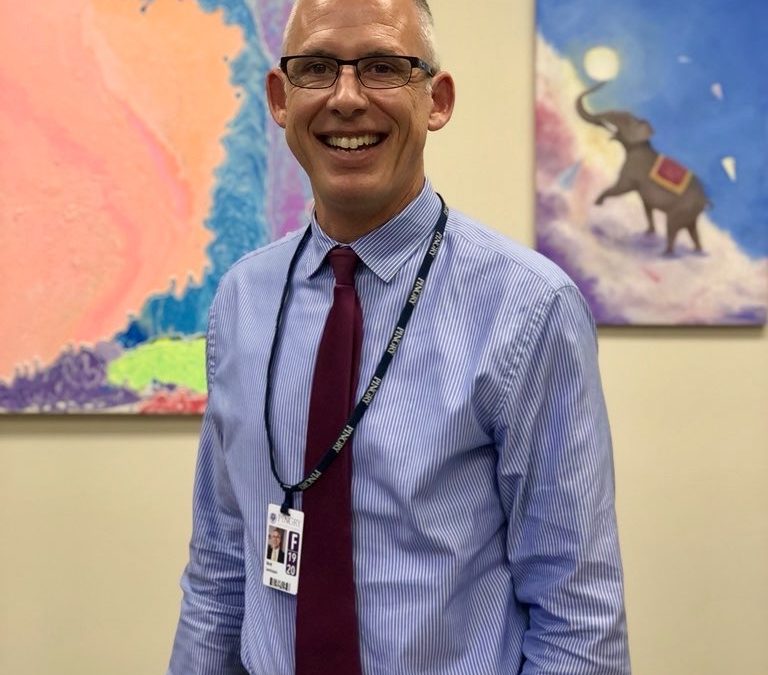
Oct 18, 2019 | Eva Schiller, Faculty + Staff, Featured, Meghan Durkin, School News
Eva Schiller (V), Vicky Gu (VI), Meghan Durkin (V)
Though the Pingry community has known his name for almost a year now, Mr. Matt Levinson has just begun his first academic year as our new Head of School. Following a five-month search and a unanimous vote from the Board of Trustees, Pingry officially welcomed its sixteenth Head of School on July 1, 2019, succeeding Mr. Nathaniel Conard’s 14-year tenure as Headmaster.
The role of the Head of School has long been ambiguous to many Pingry students. Mr. Levinson explains his job as keeping “everybody focused on the student experience… from myself, to all administration, staff, and teachers,” and that “every day is different. There are a lot of interesting challenges that cross my desk, problems to solve.” He remarked, “But also, being out in the community, being out in classes, being out at games, is really important.”
When asked what drew him to Pingry, Mr. Levinson immediately responded, “the Honor Code was a first appeal… The trust that’s inherent in having an Honor Code is really meaningful to me.” Pingry’s inclusive atmosphere was also attractive. “Commitment to diversity and inclusion is really important to me, personally and professionally,” he says, adding, “I’ve been really struck and impressed by Pingry’s diversity and how it strengthens and enriches the community.”
Beginning his career teaching both middle and high school students, Mr. Levinson has stepped into many roles within school communities, whether that be coaching sports or serving as a dean of students. He believes that his experience allows him to “understand everything that goes into running a big organization like Pingry.”
Despite his extensive experience with education, he confessed that in high school, he was not always “as engaged as [he] should’ve or could have been, but something just kind of kicked in senior year and a couple teachers really inspired [him].” During his time at Pingry so far, he has noticed “how much [the teachers] are inspiring to you all.”
When asked about his vision for Pingry, Mr. Levinson left his response open-ended. Rather than only him deciding where Pingry should go in the upcoming years, he thinks that everyone should have input and “that the vision question is something we all need to invest in and work on together.” However, he does have a “strategic plan focusing on global education, student wellbeing, interdisciplinary learning… and also to promote teacher growth and development.”
His first step is to address student wellbeing with the hopes of helping the community “improve and be attentive.” So far, he has met with peer leaders and teachers, and plans to do some staff training in November.
Speaking on the Pingry community, Mr. Levinson noted that “everyone’s been incredibly welcoming, which has been wonderful.” He has visited classes on both campuses and gone to games in order “to get the chance to see the student experience.” What amazed him since his arrival was the “long history of people who invest their lives here. I think everyone here is trying to always get better, no one’s standing still, which I love about the community”.
Mr. Levinson also revealed that the process for getting “Shorts Days” begins with students. A student emailed him one evening asking to allow shorts the next day, and by the end of the night, Mr. Levinson had confirmed one. “I know,” he says, “on a hot day, when there’s no air conditioning, it’s nice to be able to wear shorts.”
Speaking of air conditioning, will Pingry ever get it? “That’s a big question I’m hearing; lots of people want to talk about that, but I don’t have an answer to that yet. It could happen. I don’t know when, but I know it’s something that people, especially in the 90-degree weather, are very interested in.” Perhaps someday.
Mr. Levison concluded, “I would just like to say I’ve been so impressed with the students in this school. The engagement in the classes that I’ve seen, from kindergarten all the way through 12th grade, makes it clear that the kids here really like learning and want to learn, and the teachers are really invested in making that happen.”
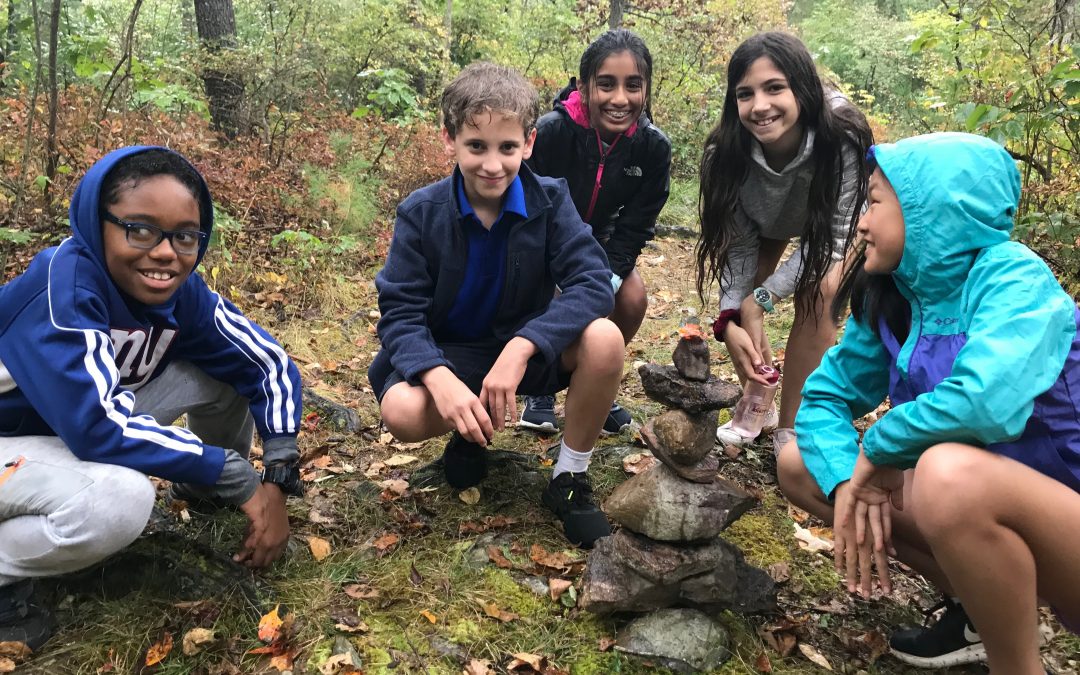
Oct 18, 2019 | School Trips
Alex Wong (I)
From September 25th to 27th, Middle School students embarked on trips to destinations ranging from the nation’s capital to right here in New Jersey. In the process, students were able to get a glimpse into what they will learn this year
Grade six traveled to Camp Mason, a campsite in northern New Jersey, for three days. There, they engaged in team building activities, including hiking, swinging on giant swings, looking at nature art, and completing an obstacle course. These activities allowed the sixth graders to get to know each other better. Mrs. Nicole Cabral recalled, “We had a great time even though it rained. Even when it rained everyone participated in the activities. We made great memories during the trip.” The trip was an exciting and memorable start to their middle school experience.
Form I went to Philadelphia from September 26th to 27th. They visited many sites and interactive centers, including Independence Hall, the Liberty Bell, the Constitution Center, the Philadelphia Zoo, the U.S. Mint, and The Franklin Institute. Students saw a wide variety of exhibits relating to topics ranging from the United States government to the human heart. Ben Chung (I) said, “The Brain Exhibit in the Franklin Institute was fun. My advisory played tag in the brain model.” Ms. Cecily Moyer noted, “I really enjoyed the Constitution Center. My advisory was very into the exhibits there. We played trivia and shook hands with the statues in Signers’ Hall.” The Philadelphia trip was an enjoyable, informative experience for the seventh grade.
For three days, Form II stayed in Washington, D.C., where they saw the Lincoln Memorial, the Washington Monument, the Arlington National Cemetery, and the National Mall. Visiting the sites helped students gain a better understanding of their historical significance. Along with learning about the various monuments and memorials, Charlotte Diemar (II) said, “I enjoyed the trip because we got to connect more with our advisory via multiple activities, such as the advisory dinner.” On the trip, students bonded with both old and new friends, while learning about the rich history of Washington, D.C.
The Middle Schoolers enjoyed their trips, as they made new friends, learned about historical sites and figures, or simply had fun with their classmates and teachers. In other words, the trips certainly set a positive tone for the year ahead.
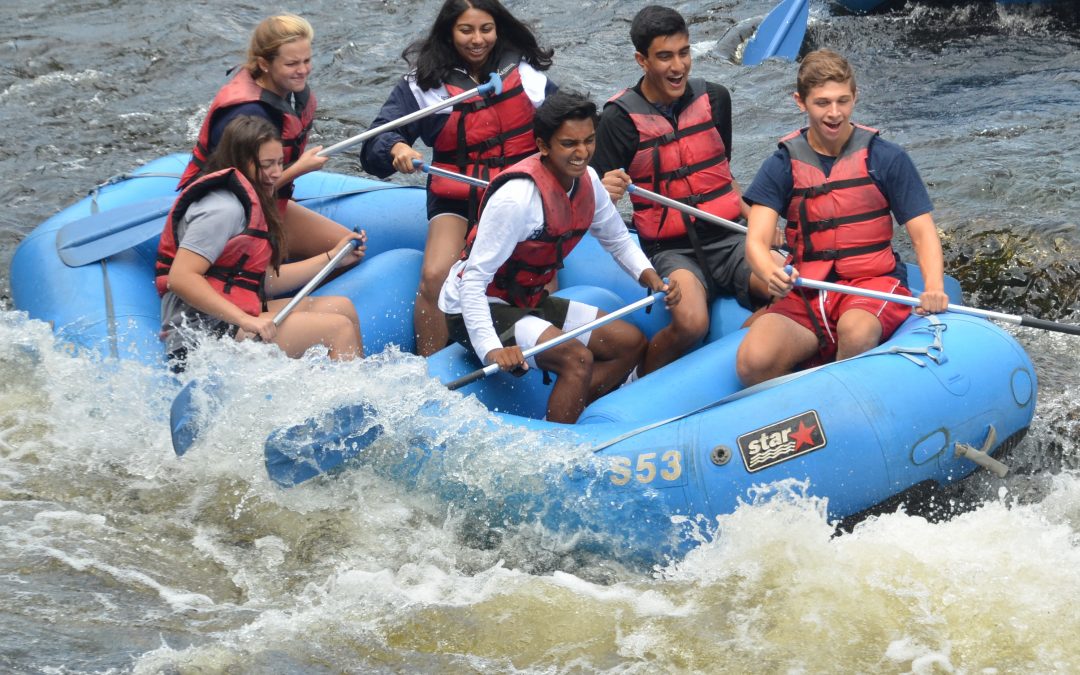
Oct 18, 2019 | School Trips
Dean Koenig (V)
The Form V class spent their opening to the school year at the Lehigh River to go whitewater rafting. Since the junior class traveled to Philadelphia in previous years for their back-to-school trips, this trip was a surprise to students.
The grade was reunited from summer break at 8:30 A.M. in the dining center. From there, the students split into their advisory groups and boarded coach buses. When the buses arrived at the site, students got off and ate their packaged lunches on picnic tables, already surrounded by nature. As they ate, the juniors shared stories of their summers and discussed the upcoming school year.
After lunch, students and faculty listened in on a brief presentation given by the Pocono Whitewater Company. The presentation laid down guidelines for the experience to come, such as safety regulations and paddling recommendations. During the lecture, students and faculty were fitted for lifejackets.
Once everyone was ready to raft, students boarded buses once again and were driven to the river. Although the original plan was for advisory groups to raft together, students were able to join the raft they wished to be in as long as there were no more than seven people in it. Each raft was provided with a bucket, which was supposed to be used to remove water from the raft.
Aided by river guides, students and faculty began to make their way down the river. Soon enough, the rafts encountered the first wave of class II rapids. Students and faculty soon got splashed, or even submerged.
Along the way down the river, the river guides offered the rafters three opportunities to exit their rafts and swim in shallow water. During this time, students had fun in the water, splashing each other and climbing into other boats with their friends. “The battles between the raft crews on the river were epic,” Dr. James Murray said. Even some river guides got in on the action. Ethan Mannello (V) said, “The most fun part of the rafting was probably splashing people with buckets of water.”
Though the students enjoyed themselves, paddling took a great deal of energy and most were ready to head home by the time the rafting was over. Students and faculty were bussed back to the lunch location to retrieve their belongings before the coach busses took them back to school. The buses arrived at Pingry at around 7:00 P.M.
Sandy Friedman (V) remarked, “The retreat made me feel closer to a lot of my classmates.”
Overall, it was an exciting way for students to reconvene before classes began.
Nov 17, 2018 | Featured, Summer Experiences
By Chase Barnes ’21
There were many constants for me this summer. Begrudgingly rolling out of bed every day at 6 AM, relentless heat and humidity, crazy parents, and, of course, children. This summer, for seven weeks, I was a camp counselor at a local YMCA. Reflecting on my experience, I think about all the times I complained and how close I was to quitting after three weeks. It was a lot of responsibility and repetition mixed with some stressful unpredictability, and at some points I just couldn’t take it. At the same time, I honestly cannot put into words how amazing it was to have so many positive, and sometimes quite strange, interactions with parents and kids over the course of those seven weeks. Some of those experiences were so crazy that you wouldn’t even believe me. Just trust me on this one; I have quite some stories to tell from that camp.
And while there were both highs and lows, I learned a lot about myself as well as about working with other people. I feel that I have become more proactive, flexible, and patient. One day it would be sunny all day, and then at noon it would start pouring, so we had to spontaneously figure out what activities to do next. Day by day, situation by situation, we had a responsibility to continue the fun for the kids. I guess this is a good transition into the rather poor management of the camp itself. From what I heard from returning counselors, there was really no organization and activities were not thought out very well. Luckily, the kids didn’t notice, but there were times during the day when we, the counselors, literally had nothing to do with the kids. We would have to make up a game or find another activity to do because we weren’t provided with a great schedule or alternative activities. For example, one of the themes of the summer was STEM, and every Wednesday we were supposed to do some science-related arts and crafts. By that I mean we did one arts and crafts project the first week, and the rest of camp there was no activity.
It all cycled back to a lack of proactiveness, considering that what we did do instead was go to the playground for three hours and watch the kids tire themselves out until it was time to go home. Another day, one of my campers was stung by a bee and while she was screaming and crying the other campers were crowding around us and jumping around yelling, “Chase, Chase, Chase.” I had to deal with all of the kids as well as write an incident report, call a parent, and take the stinger out of her leg.
This was one of the many challenging situations I faced at the camp, but of course, everything worked out in the end. I learned quite a lot and wouldn’t change it for anything. I made a lot of friends, met a lot of great kids, and went to places I’ve never been. For that, I can say it was a good experience.
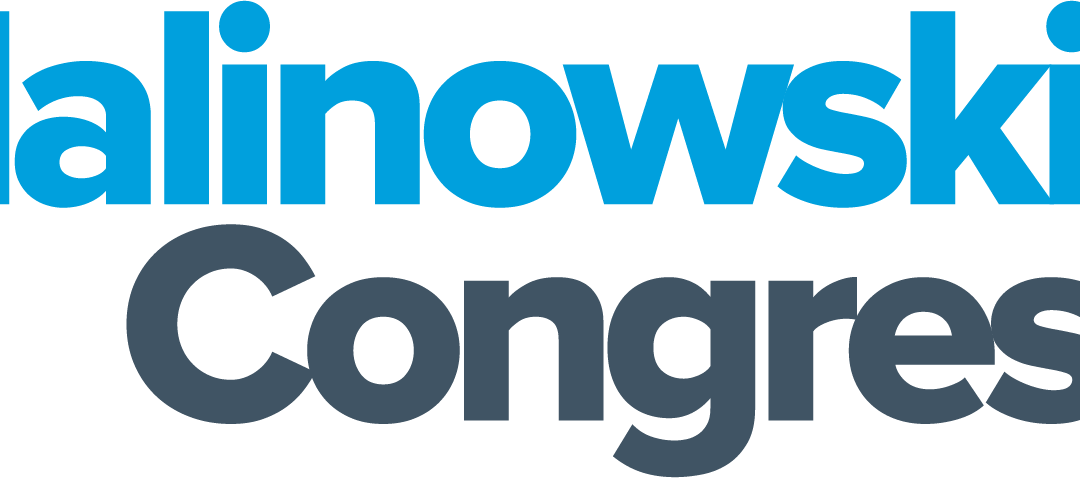
Nov 17, 2018 | Featured, Noah Bergam, Summer Experiences
By Noah Bergam ’21
In the last few weeks of summer, as bored as anyone on a lazy August afternoon might be, I decided to intern at my local Democratic congressional campaign.
In some ways, I felt pressured; my parents kept telling me I should try something new – something that was not about technology or robotics. I was hesitant at first, although deep down I felt that taking a break from my tech-oriented agenda would be good for me. I have always had an interest in politics, which had thus far only manifested itself in reading news on my phone. I decided to take that a step further.
Ironically enough, upon starting my internship, I felt more robotic than I had ever before. Upon my entrance into the paper, poster, and map-ridden headquarters, barely welcomed and surrounded by strangers who seemed to know exactly what they were doing, I was immediately tasked with three and a half hours of phone banking.
Without knowing much of my candidate’s policies aside from the fact that he was a Democrat, I was responsible for calling lists of possible voters (most of whom did not pick up), and convincing them to vote for Tom Malinowski. I was equipped with a script, mediocre conversational skills, and a roughly ten-minute training.
It was a humbling experience. I had always seen politics as something uplifting, something active that puts you in the news and brings about change in society. However, I had somehow found myself here, on the bottom of the campaign staff hierarchy, making calls to convince people to vote for a man I had never met, who I supported (at least in the beginning) solely due to a (relatively weak) party affiliation.
Call after call (and house after house, when we went into the real world for canvassing), I discovered so many different people and reactions. I proved to myself the importance of slow and clear speaking, welcoming body language, and smiling and staying optimistic even when faced with challenging reactions.
I also spent time during my lunch breaks learning more about my candidate’s politics through online articles and conversations with fellow interns. In doing so, I came to better appreciate the cause for which I was fighting. I was more determined accomplish my task of contacting voters. I might not be Tom Malinowski, but I could still appreciate the fact that my work might make a difference in who represents my congressional district next year. And if not, so be it. I would still get so much more out of the experience than that.
Calls and canvases became personal endeavors; I was no longer a robot, but a dedicated person trying to respectfully convince others of my beliefs. That is a skill that I appreciate developing– making a difference in the world means changing minds, little by little, and this internship was just the beginning.
As I continue to volunteer with the campaign, I am more than ever glad that I took the chance apply myself to it in the first place. I feel that my work is rewarding, not only because Tom Malinowski may win a spot in Congress this November, but because of my own personal confidence, rhetoric, and knowledge of American politics have benefitted.
If I learned one thing with the campaign, it’s there’s always more to discover once you leave your comfort zone. I was able to pick up on skills that I now know I was lacking in the past because I dove into my personal unknown.









